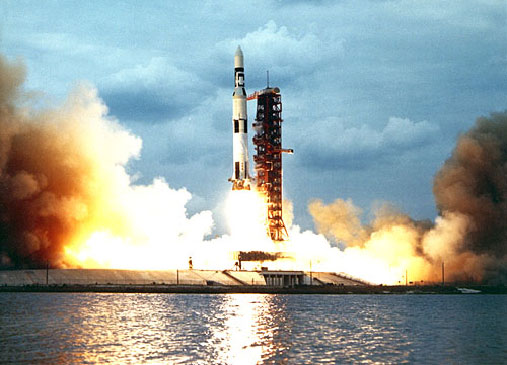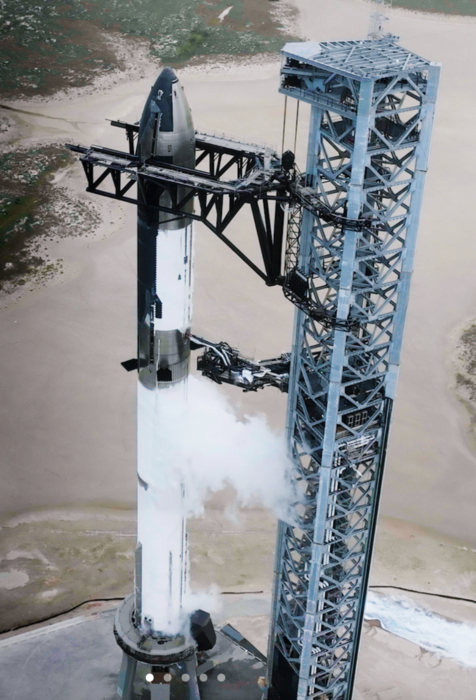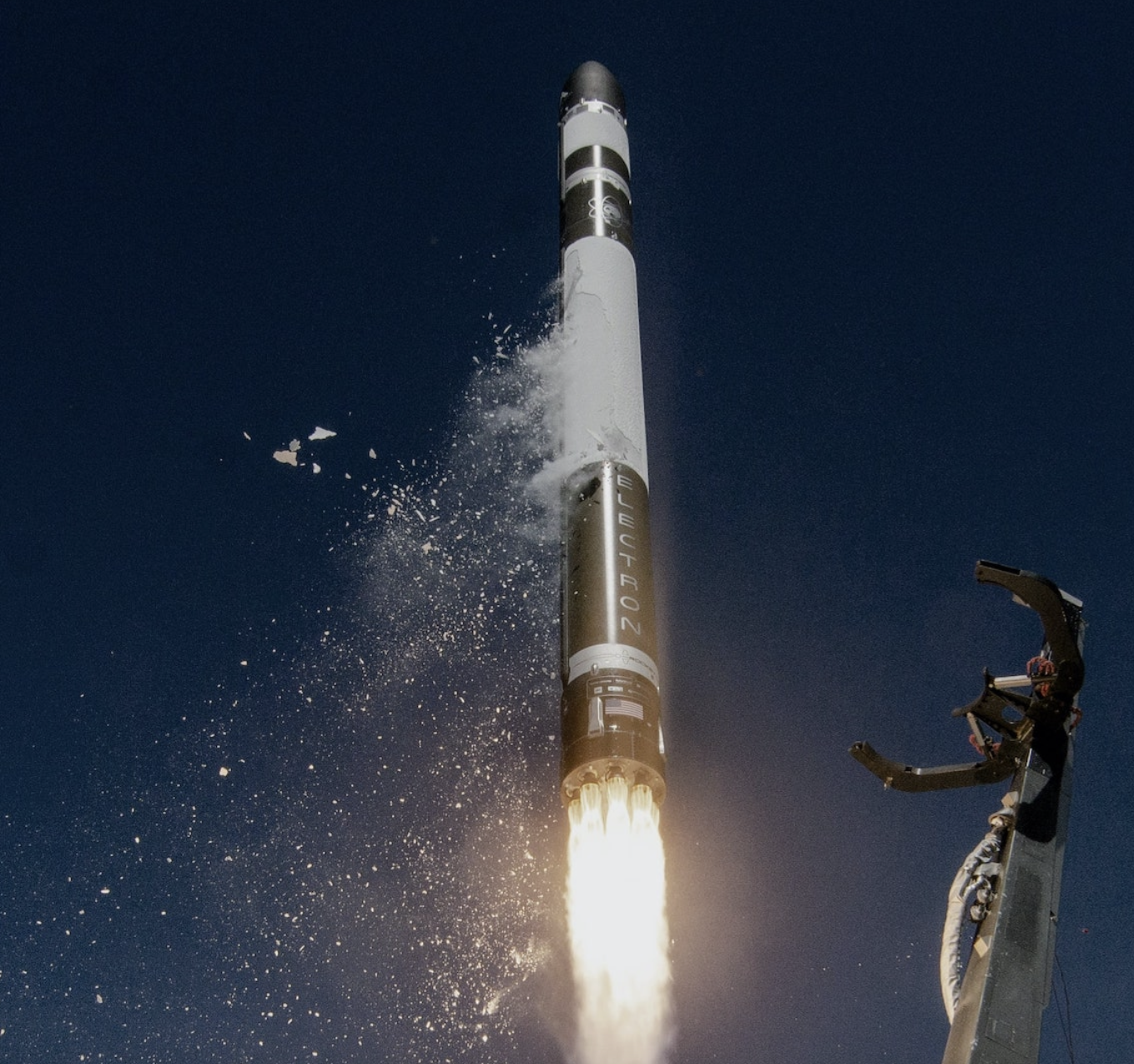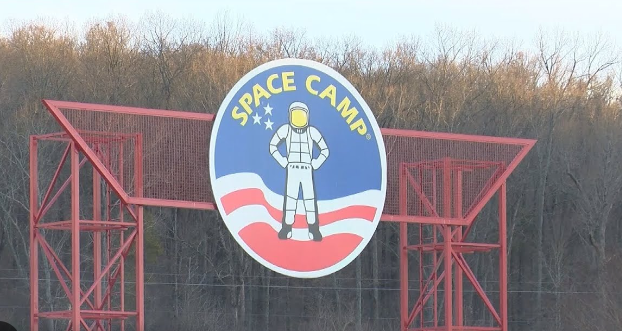The laws of physics demand a certain cost for passage rights to space: millions to billions of dollars, cash or card. That seems pretty steep for a quick trip up Earth’s gravity well, but clambering out of the hole we have been contained in since our inception is not quite so simple. The eye-watering sums are funneled into machines with which, by the skin of our teeth, we can overcome the relentless forces trapping us here on Earth: rockets.
Their job is straightforward enough; they need only dump propellant overboard at such high rates that the resulting thrust beats gravity and gets the payload (human or machine) into space. So, how much does a rocket ship cost? This article will delve into the cost of rocket ships, taking into account factors such as size and type, along with exploring how much it costs to launch a rocket.
Table of Contents
ToggleHow Much Does It Cost to Launch a Rocket?
Orbital Rocket Launch Costs
There are far too many orbital rockets to rattle off here, so it might be more useful to compare their costs to suborbital rockets. Since the latter do not have to deal with the brutal trip to orbit nor require the power to reach it, they are often cheaper. For example, sounding rockets cost around US $1 million a pop. Though it is hard to estimate the markup margin of tourism rockets, a trip carrying four passengers aboard Blue Origin’s New Shepard, for which a ticket is estimated to cost around US $1.25 million, should come at a price of US $5 million.
| Orbital Rocket Launch Costs | Price per Launch in USD |
| Sounding Rockets | 1 million |
| New Shepard | 5 million |
| Electron | 7.5 million |
| Falcon 9 | 67 million |
| Delta IV Heavy | 350 million |
| SLS | 4.1 billion |
| Soyuz-2 | 35-80 million |
| Long March | 30-81 million |
| PSLV | 21-31 million |
| GSLV | 47 million |
| Ariane 5 | 178 million |
The orbital rockets, to compare, cost much more, but also vary quite a bit according to their purpose. There is US $7.5 million for Rocket Lab’s Electron smallsat launcher, US $67 million for a Falcon 9 launch (SpaceX charges about US $55 million per seat for crewed launches), US $350 million for Delta IV Heavy, and US $4.1 billion for SLS (Space Launch System). The variety continues outside the US.
The Russian Soyuz-2 costs anywhere from US $35-80 million, depending on whether it is launched by Roscosmos or Arianespace. China’s Long March rockets come in many shapes and sizes, and certain variants cost anywhere from US $30-81 million to launch. India’s Polar Satellite Launch Vehicle (PSLV) and Geosynchronous Satellite Launch Vehicle (GSLV), both medium-lift, cost US $21-31 million and US $47 million, respectively. Ariane 5, Europe’s trusted heavy launcher, costs about US $178 million.
Reusable Rocket Launch Costs
Reusability is slowly but surely coming into vogue, though it is not yet very widespread. Again, Falcon 9 is priced at US $67 million, while its heavy-lift version Falcon Heavy (of which all three boosters plus fairing can theoretically be recovered) comes at US $90 million, rising to US $150 million if expended. SpaceX’s Starship, which is still in fiery development, is designed to be fully reusable. Once ready, its launch costs are set to be high at first due to the US $3 billion already spent on development. Still, Musk sets his sights on a US $10 million launch once it is in regular operation.
| Reusable Rocket Launch Costs | Price per Launch in USD |
| Falcon 9 | 67 million |
| Falcon Heavy | 90-150 million |
| Starship | 10 million |
Interplanetary Rocket Ship Launch Costs
Alas, there do not seem to be any operational interplanetary rockets in existence. One could theoretically count the plethora of rockets that have been used for launching interplanetary probes (such as ULA’s [United Launch Alliance] Atlas V 401, which launched NASA’s MAVEN orbiter for US $187 million in 2013), but these only accompany the payload for a small part of the trip. Similarly, SLS (like its older brother, the Saturn V) serves the purpose of sending its spacecraft, Orion, towards the moon, but breaks apart in the process. Starship, designed with Mars in mind, seems to be the only real interplanetary rocket out there, but it is far from operational. What exactly such a trip to our neighbor could look like is unclear, but Musk has suggested that a US $100,000 ticket – two way – with 100 passengers per ship might be on the cards in the distant future.
Rocket Launch Costs for Space Tourism
Gauging the cost versus price for space tourism is tricky, but Blue Origin’s New Shepard tickets reportedly sell for US $1.25 million a pop, with four passengers per suborbital flight. However, some customers get in for free, while another has paid US $28 million for a ticket at an auction. If that is too steep, a suborbital flight aboard Virgin Galactic’s SpaceShipTwo (though not technically a rocket) costs US $450,000. The company is in its final testing phases, and seems to fit four to six passengers (plus two pilots) into its spaceplane, resulting in a price of US $1.8-2.7 million. SpaceX, through Axiom’s liaising services, also offers touristic trips to the ISS at US $55 million a seat. Billionaire Jared Isaacman also bought two flights aboard SpaceX’s Crew Dragon spacecraft and one aboard Starship for an undisclosed sum for his Polaris program, having previously spent ‘under US $200 million’ for a four-person stint aboard Dragon as part of 2021’s Inspiration 4 mission.
| Rocket Launch Costs for Space Tourism | Price per Person in USD |
| New Shepard | 1.25 million |
| SpaceShipTwo | 450,000 |
| Falcon 9 | 55 million |
Cost of a Small Rocket Launch
Small-lift vehicles are by far the most popular category of rockets. Obviously, their launch costs are lower than most heavier-lift variants, albeit with a higher cost per kilo to LEO (low Earth orbit), and offer customers more flexibility in their flight profiles. Rocket Lab’s US $7.5 million Electron is certainly cheap, lifting some 300 kg to LEO, but customers pay US $25,000 for a kilo to reach orbit. Depending on the mission and properties of the payload, however, such a dedicated launch might be cheaper and more efficient than a rideshare.
| Small Rocket Launch Costs | Price per Launch in USD |
| Electron | 7.5 million |
| Terran 1 | 12 million |
| Alpha | 15 million |
| SSLV | 3.7 million |
| Long March 11 | 7 million |
Relativity Space retired its 3D-printed Terran 1 rocket in favor of developing its reusable successor but had advertised its cost as US $12 million. Capable of lifting 1,250 kg to LEO, its ratio came in at US $9,600 / kg. Firefly Aeropsace’s Alpha, at US $15 million, can launch 1,170 kilos to LEO, resulting in a ratio of about US $12,821 / kg. The Small Satellite Launch Vehicle (SSLV) developed by India’s space agency ISRO, can lift 500 kg to LEO and is set to cost the equivalent of about US $3.7 million. That would give it a ratio of roughly US $7,400 / kg. China has several small-lift rockets, one of them being the Long March 11, whose ratio ‘will not exceed’ US $10,000 / kg. It is capable of lifting 700 kg to LEO, resulting in a price of roughly US $7 million.
Cost of a Medium-sized Rocket Launch
Medium-lifts come with the benefit of offering generally lower payload-to-orbit prices and the possibility of rideshare missions to further save on costs, but provide less flexibility for individual payloads’ destinations. The Falcon 9, coming in at US $67 million a launch, currently rules this industry, offering rideshares at a fraction of the price of smallsat launchers. SpaceX lists its payload capacity at 22.8 metric tons to LEO in expendable mode (which would technically classify it as heavy-lift), but boosters are almost always reused. According to Musk in 2016, reuse causes the rocket to lose 30-40% of its original payload capacity, meaning its reusable configuration can lift 13,680 – 15,960 kg to LEO for a price of roughly US $4,520 per kilo. Without the markup, the marginal cost of US $15.25 million mentioned by Musk in 2020 (which again, might have changed since) makes for a cost of roughly US $1,029/kg.
| Medium Rocket Launch Costs | Price per Launch in USD |
| Falcon 9 | 67 million |
| Long March 3B | 50 million |
| Soyuz-2 | 35-80 million |
| PSLV | 21-31 million |
| GSLV | 47 million |
China’s expendable Long March 3B, for contrast, costs about US $50 million a launch, and usually shuttles its payload of up to 5,500 kg to geostationary transfer orbit (GTO) for a ratio of about US $9,091/kg. Soyuz-2, Russia’s veteran rocket, costs US $35-80 million (depending on the provider) and can lift up to 9,200 kg to LEO. Its lowest possible ratio would therefore be about US $3,804/kg. ISRO’s medium-lift vehicles PSLV and GSLV cost US $21-31 million and US $47 million, can lift 3,250 kg and 5,000 kg, and have ratios of US $6,642 – 9,538 / kg and US $9,400 / kg to LEO, respectively.
Cost of a Heavy-Lift Rocket Launch
Heavy-lifters are the finickiest of options, pushing the rocket equations to its limits, and are therefore pretty pricey. The SLS tops the chart with its US $4.1 billion, lifting 95 metric tons to LEO for a ratio of US $43,157 / kg. ULA’s US $350 million Delta IV Heavy can lift 28.37 metric tons to LEO, its ratio US $12,336 / kg. On the European side, Ariane 5, while operational, lifted 21 metric tons to LEO for US $178 million at US $8,476 / kg.
| Heavy-lift Rocket Launch Costs | Price per Launch in USD |
| SLS | 4.1 billion |
| Delta IV Heavy | 350 million |
| Ariane 5 | 178 million |
| Falcon Heavy | 90 million |
| Starship | 10 million |
Falcon Heavy can lift 64 metric tons to LEO when expended, but loses 30-40% of this capability when part of it is reused, according to Musk’s 2016 estimate. Exact prices and payloads vary according to how much of the rocket is expended, but with maximum reusability, 38.4 to 44.8 metric tons can be lifted to LEO for US $90 million. Prices to orbit are therefore US $2,343 – $2,009 / kg, but the markup value for Heavy remains obscure. The still-prototypical Starship, with the potential to launch 150 metric tons to LEO while remaining reusable (a jaw-dropping 250 when expended), could bring about a record ratio of US $66.67/kg if it makes good on its promise of US $10 million a launch in reusable mode.
SpaceX Rocket Launch Cost
SpaceX, while still cutting itself a sizeable profit, offers launches at comparatively bargain prices. The partially reusable Falcon 9 sets customers back by US $67 million a launch and costs the company much less. Falcon Heavy, it is a more powerful cousin, comes in at US $90 million, carrying far heavier payloads. Meanwhile, Starship is still in its adolescence, turning cartwheels in the air and lighting up the sky with explosions. If and when it settles down, however, it has the chance the revolutionize spaceflight by offering not just unbelievably low prices, but the possibility of, say, launching entire stations or satellite constellations at once.
Read also: Top 6 SpaceX’ Goals
NASA Rocket Launch Cost
There is a reason why the majority of modern NASA launches are outsourced to commercial launchers such as SpaceX and Rocket Lab: the agency’s rockets are painfully pricey. The Space Shuttle cost about US $1.6 billion a pop, not to mention the SLS’s US $4.1 billion. This is largely due to the issues described above; its projects often double as job programs for its contractors and cannot simply be switched for something more efficient. A study by then-Oxford professor Bent Flyvbjerg highlights another adjacent issue: NASA’s habit of implementing so-called quantum leap projects like the Shuttle and SLS, seeking to make enormous strides in one fell swoop instead of developing projects incrementally.
The latter approach is taken by companies like SpaceX and Relativity Space, who start small and iterate their way to more ambitious designs. Quantum leap projects, designed from the top down, leave little room for flexibility and failure (which NASA, which is watched like a hawk by US Congress, cannot afford), even though this can help engineers figure things out and speed along the development process. As a result, SpaceX had an average of 1.1% cost overrun over 16 projects, while NASA, over 118, saw 90%. With costs to leave Earth already so high, will such astronomical sums leave us tethered to the ground?
You may also like:
- How Much Does Rocket Fuel Really Cost?
- Top 10 Rocket Launch Companies To Look For in 2023
- The 20 Best Movies About Space to Watch In 2023
Factors Influencing the Cost of Rocket Launches
Until we find a less massive planet to live on, every rocket must deal with Earth’s punishing gravity. To fight it, they rely on Newton’s Third Law of Motion, which states that every action will have an equal and opposite reaction. Rockets use this logic to propel themselves upwards by chucking propellant out of its engines at dizzying speeds, of which the opposite reaction is the rocket moving skywards. Why exactly this can be tricky is summed up by the infamous rocket equation, derived in 1903 by Russian scientist Konstantin Tsiolkovsky.
The obvious drawback highlighted by the equation is that the sheer amount of propellant needed to get the rocket moving (constituting the vast majority of the rocket’s mass) increases with bigger payloads or further destinations, adding even more to the mass. This is part of the reason rockets heading to orbit are much more complex and expensive than their suborbital siblings, since they must achieve orbital velocity – a cool 7.8 km / s for LEO – to ensure their payload does not fall back down. As a result, a rocket’s dry mass (mass without propellant) usually constitutes just up to 17% of the total mass, though this depends on a given propellant’s efficiency and is often an even smaller fraction. The challenge comes in trying to make the rocket as light as possible to allow for more payload, while still allowing it to withstand the extreme forces acting on it.

Another consequence of the equation is that as all that propellant leaves the rocket within minutes following a launch, the rocket lugs around plenty of dead weight that was previously used to house it; think massive tanks, valves, and engines. To increase efficiency, rockets frequently use a staging approach. Here, a rocket is divided into multiple stages, each one carrying out a certain phase of a launch. As a stage completes its job and runs out of fuel, it detaches, leaving less work for the rest of the rocket to do. Not only is this approach more efficient in terms of ditching dead weight but stages can now be custom-designed according to the environment they will perform in. For example, rocket engines that are very efficient at sea level (where atmospheric pressure pushes on the plume, directing its energy downwards) lose much of that efficiency in a vacuum (where the plume expands beyond the nozzle). Rockets therefore often feature vacuum-optimized engines with bigger nozzles to compensate for that lack of pressure on upper stages, which would not function at sea level.
Staged or not, however, the majority of rocket components are discarded after one use, and, with them, all the millions, if not billions, spent on them. It is not that the raw materials are so groundbreakingly expensive though; labor is the real bank-breaker. Rocket assembly time varies, ranging from the over four years to manufacture the core stage of NASA’s SLS Moon rocket to the 60 days envisioned by Relativity Space (Indian startup Skyroot Aerospace is aiming for just 24 hours). Some companies including Spacetai, Relativity Space, Skyroot Aerospace, and Skyrora hope to 3D print some, if not all, of their vehicles to help combat these costs. However, before the actual assembly and launch can take place, designing and developing all that innovative and risky technology takes years – during which the company hemorrhages cash.
Take SpaceX as a case study on cost. CEO Elon Musk has stated that propellant and materials make up about 0.3% and 2% respectively of the cost of his company’s Falcon 9 rocket (exact figures may have changed since this 2013 interview). SpaceX employs around 12,000 people, and while exact salaries and positions are unclear, most of them are likely to be highly trained specialists. With the average US salary for aerospace engineers being US $122,270/year, it is easy to see how the costs quickly add up. Then there was the development period, during which Falcon was not yet operational and bringing in money. Musk estimated in 2017 that US $1 billion had been spent on developing the rocket’s technology, which is a hole that needs to be filled. Plus, SpaceX would ultimately like to make a buck or two. Therefore, the Falcon 9 costs about US $50-60 million to build (according to Musk in 2011, so exact numbers might once again have changed) and the company charges US $67 million for a launch, with military launches even costlier due to extra security measures.

Of course, that is not the full story though. SpaceX is among the cheapest services today because the company reuses its boosters and fairings, which make up 60% and 10% of the manufacturing costs, respectively (as reported by CNBC). Most other companies do not do this, and therein lies one of the major reasons for the shocking price tags. Save for NASA’s Space Shuttle, which suffered from its own issues, reusability is a fairly new trend and must be incorporated into the heart of a rocket’s design from the beginning. Many older rockets are therefore more expensive. ULA’s Delta IV Heavy, for example, costs around US $350 million a pop, which is comparable to buying a brand-new Airbus A350-1000 and dumping it after one flight.
In contrast, Musk stated in 2020 that the marginal cost for a Falcon 9 launch is about US $15 million since months of labor are not required to replace the booster and fairing halves. Not reusing these would set the company back roughly US $42 million a launch (according to the figures given by Musk); instead, with reuse, just US $250,000 is needed for refurbishment. There also does not seem to be a definitive limit on how many times a booster can be refilled. Still, some customers pay more to expend a booster, which uses the propellant otherwise used for the landing maneuver to squeeze more efficiency out of the flight.
In addition to labor and reusability, another factor that particularly influences the cost of government programs such as NASA’s is the type of contract used for hiring commercial companies’ services. These can be divided into two categories: fixed price and cost-plus. Fixed price contracts involve the government body paying the contractor no more than a previously agreed-upon amount. These often come in connection with the company reaching certain milestones in whatever service it is providing, and the company foots the bill for any cost overruns.
However, with cost-plus contracts, of which there are a few different subtypes, the government body reimburses the company for all its expenses and pays them extra in award fees, too. They might allow the customer, namely NASA, more control and flexibility in its plans, but often result in chronically delayed, overly expensive projects since contractors actively benefit from drawing the projects out. The classic example of this is the Space Shuttle-turned-SLS, wherein contractors ate up a hefty chunk of the Shuttle budget and created plenty of jobs and economic growth. To keep this going upon the Shuttle’s retirement, officials insisted the same cost-plus contractors, such as Boeing, be included to work on the SLS, NASA’s new Moon rocket. The rocket finally launched in 2022 after years of delays, and NASA’s 2016 allocation of US $6.2 billion for the project ballooned to US $23 billion. A single launch cost US $4.1 billion.
If you found this article to be informative, you can explore more current space news, exclusives, interviews, and podcasts here.
Featured image: Electron rocket. Credit: Rocket Lab
Share this article:








